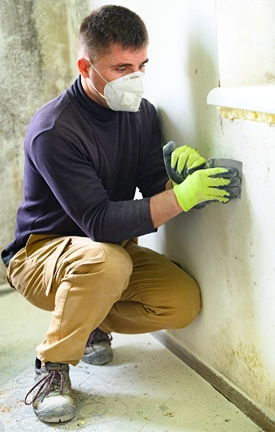Why Proper Maintenance Keeps Your Home Safe and Beautiful
A beautiful house is not just ornamental; it’s also comfortable, safe, and protected. When maintained well, your home’s value increases. Maintenance pays, ensuring the prevention of home damage, manages its efficient use, and enhances overall aesthetics. Failure to keep up on repairs and safety issues can result in unexpected expenses and potential health hazards.
We’ll go over why it is essential to maintain your home and provide some practical ways to ensure it’s safe for your family.
The Importance of Home Maintenance
From cleaning and thorough house hygiene to repair work, maintenance guarantees that every space in your house looks and works as it should. But most of all, it avoids stagnation of progress and conversion of minor matters into large-scale concerns.
In its broad sense, maintenance work involves several activities, such as system inspection, repair, and precautionary work. Minor problems like a dripping tap, chalking paint, or bad air quality may not seem a big deal initially, but rectifying them after days means extra expenses, time, and unnecessary stress.
The Benefits of Regular Maintenance for a Safe and Beautiful Home
1. Ensuring Safety in Your Home
Safety is the top priority of any home. Maintenance is essential because issues that may potentially cause harm can be spotted and dealt with before they become a big issue. This includes:
- Electrical Safety: Check wiring and outlets to avoid fires or shock attacks. Any wiring which has worn out or is old should be replaced.
- Structural Integrity: The development of cracks on walls or floors leads to weak foundations of houses. These problems can be identified during inspection and assessment activities on a more frequent basis.
- Plumbing Repairs: A leak or burst pipe can result in water damage that promotes mold, which has the potential to render a building unsafe.
It also plays a role in fire precaution, whereby smoke detectors are checked, chimneys are cleaned, and fire extinguishers are tested to ensure they are working as expected. Every home should also have a carbon monoxide detector.
2. Preserving the Value of Your Property
The house is usually one of the biggest assets a person has in their lifetime. Therefore, this investment requires maintenance from. The property in disrepair may become invisible and difficult to sell without providing a deep discount on the price.
The painting of walls and fixing a damaged floor can make make homes look attractive and fully functional. Getting an instant estimate for roofing will ensure your home is protected. It also has been found that systematic inspections of heating, ventilation, and air-conditioning systems, pipes, and electrical wiring are necessary to avoid costly failures that impact the value of a property.
A maintained home results in more potential buyers willing to take part in highly competitive bidding on the home.
3. Enhancing the Aesthetic Appeal
Proper maintenance implies that your home, both inside and outside, always looks as it should. Key steps include:
- Exterior Maintenance: Cleaning gutters, washing windows, and repainting walls maintain an appealing home’s exterior appearance.
- Landscaping: Beautifully manicured lawns, neatly trimmed trees, flowers, and lawns give the property a facelift.
- Interior Upkeep: Cleaning the carpets, sanding, or varnishing wooden floors, and changing interiors keep living areas warm and more appealing.
Positively transforming your home’s appearance is an investment that makes everyone feel welcome and ensures that you live in a house you have chosen according to your taste.
4. Improving Energy Efficiency
Proper maintenance of heating and air conditioning systems will lead to energy savings in cost and the natural resources used. Sustainable homes are also comfortable and conserve energy in equal proportions.
Simple steps to enhance efficiency include:
- Sealing Drafts: Replace worn out weather stripping on doors to avoid heat loss. Install quality blinds to block cold in the winter and heat in the summer. Consider window replacement in older homes.
- Maintaining HVAC Systems: Maintenance includes cleaning and replacing filters. Plan for annual servicing and check-up of the equipment.
- Upgrading Appliances: Update old appliances with new and efficient ones to reduce electricity use.
These activities help minimize costs and frequency. A little repair now and then prevents big expensive repairs down the road. While ever homeowner should have funds saved for larger unexpected repairs, it’s important to put regular maintenance costs in your budget.
5. Protecting Indoor Air Quality
Indoor air quality must be kept healthy. Polluted air can cause diseases such as respiratory diseases, allergies, and other illnesses. Maintaining cleanliness and fresh air, as well as controlling possible harmful sources, creates a healthy environment.
Steps to improve indoor air quality include:
- Ventilation: Correct air flow by clearing system vents, and use of extracting fans in areas such as the kitchen and bathroom.
- Dust and Allergens: Dust and vacuum frequently and employ air cleaners to reduce dust levels and other airborne irritants.
- Pollutant Removal: In homes that are contaminated with VOCs or other toxic chemicals, a service such as formaldehyde removal will prove helpful in creating a better living space.
When your home is clean, the health of your family will be enhanced.
6. Prolonging the Lifespan of Home Systems and Appliances
Heating and cooling systems, as well as appliances, need regular maintenance if they are to run effectively for an extended period of time.
Key areas to focus on include:
- HVAC Systems: Maintenance allows the system to have proper heating and cooling and also increases the system’s lifespan.
- Water Heater: Flush the tank annually to prevent corrosion. Test the pressure-relief valve and check gas lines for leaks.
- Appliances: Properly clean the kitchen equipment that is used in cooking food, washing dishes, and storing foods, such as refrigerators and ovens.
Proper maintenance of your home systems and appliances will save you from having to replace them too early.
7. Addressing Moisture and Mold Issues
Maintenance will enable you to dismantle moisture problems in their beginning stages, before they become serious—potentially avoiding the need for a full water damage restoration service later on.
Signs of moisture problems include:
- Water stains on walls or ceilings.
- The presence of smell such as wet, moldy odor, or obvious mold formation.
- Water droplets form on the windows or the pipes.
Solutions to these problems include sealing the leaks, increasing air circulation, and using humidifiers, especially in humid areas. Professional mold removal help may be required where the mold infestation is quite severe. Protection and prevention of mold at home make the home safe and comfortable for its occupants.
The Closing Note
Maintenance is paramount; it always makes a home safe, functional, and beautiful. Not only does upkeep keep the value of your property at optimal points, but it also guarantees that the appearance of your home is appealing to the eye to ensure that you and those living in it are comfortable.
You can avoid expensive repairs and create a space that promotes your well-being by taking care of risks, increasing energy efficiency, and maintaining the best possible condition of your home’s systems. Enlisting the expertise of professional services can help guarantee a safer living environment for problems like indoor pollutants. Invest in routine upkeep to safeguard your house and reap its rewards for many years to come.
Read how to how to make home repairs kid friendly after a storm.




